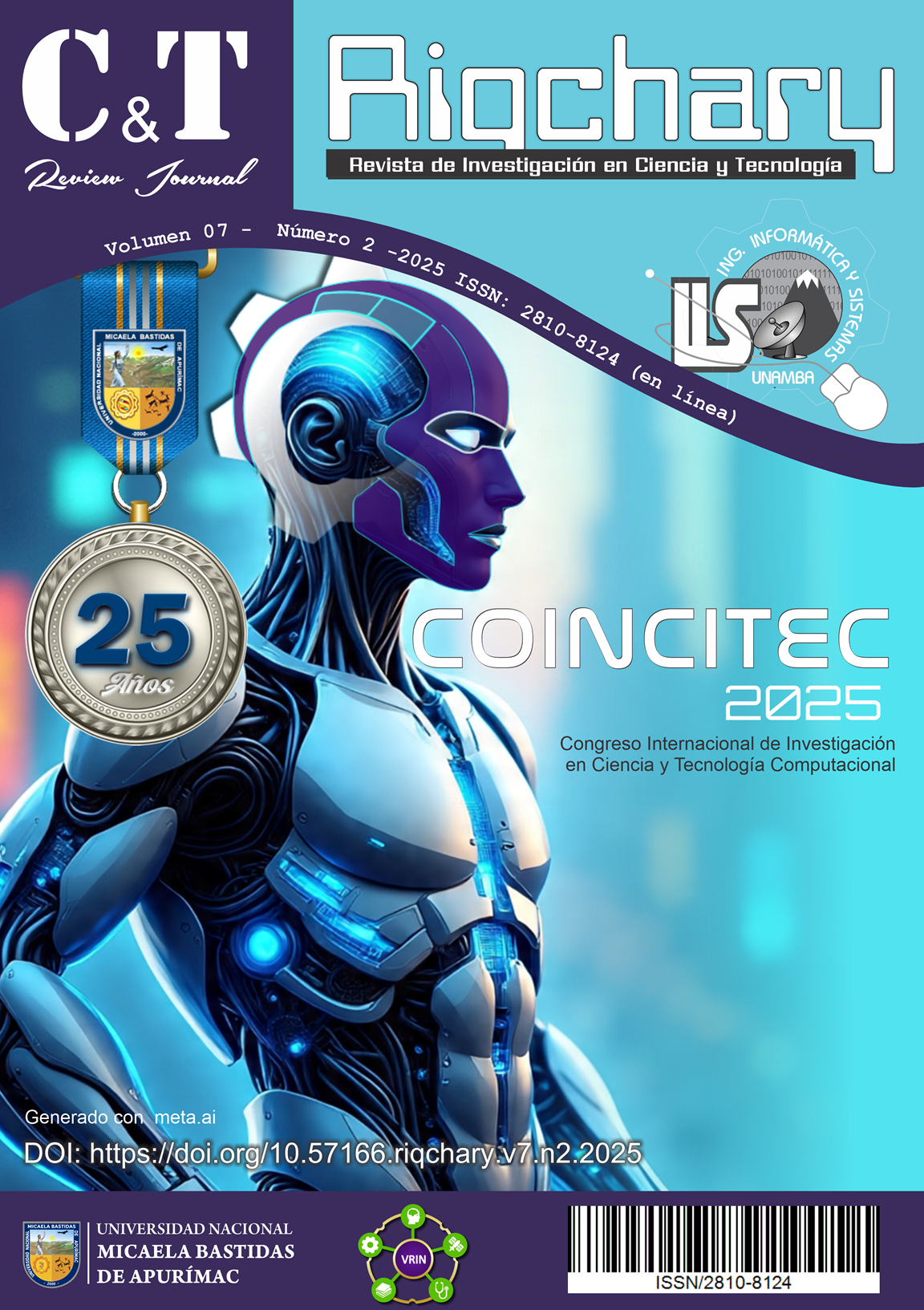Neuro-AI in the classroom: New frontiers in university student motivation and performance
Main Article Content
Abstract
Neuro-AI has the potential to revolutionize education by improving student motivation and performance. It is critical that educators and developers work together to create safe and ethical learning environments. Future research should focus on the long-term evaluation of these technologies in different educational contexts, as well as the development of hybrid models that integrate neuroscience and teaching experience. Although neuroAI offers opportunities to personalize learning through brain-computer interfaces and neurofeedback, its implementation must be ethical, prioritizing student autonomy and data privacy. The creation of laws that support the responsible use of these technologies is recommended. In short, neuroAI not only improves academic performance but also transforms teaching, paving the way for a more inclusive and efficient educational future.
Article Details

This work is licensed under a Creative Commons Attribution-NonCommercial-NoDerivatives 4.0 International License.
When an author creates an article and publishes it in a journal, the copyright passes to the journal as part of the publishing agreement. Therefore, the journal becomes the owner of the rights to reproduce, distribute and sell the article. The author retains some rights, such as the right to be recognized as the creator of the article and the right to use the article for his or her own scholarly or research purposes, unless otherwise agreed in the publication agreement.
How to Cite
References
A. Graesser y S. D'mello, «AutoTutor and affective autotutor: Learning by talking with cognitively and emotionally intelligent computers that talk back,» ACM Transactions on Interactive Intelligent Systems (TiiS), vol. 2, nº 23, pp. 1 - 39, 2023.
D. Edward L. y R. Richard M. , «Intrinsic and Extrinsic Motivations: Classic Definitions and New Directions,» Contemporary Educational Psychology, vol. 25, pp. 54 - 67, 2000.
C. Latorre y M. Liesa Orús, Tecnología y neuroeducación desde un enfoque inclusivo, Barcelona: OCTAEDRO S.L., 2022.
R. J. Angulo Guerrero, «Neuroeducación y tecnologías alternativas, el impacto de la IA en la transformación de los aprendizajes convencionales,» Star of Sciences Multidisciplinary Journal, vol. 2, nº 1, pp. 1 - 8, 2025.
S. Deterding, D. Dixon, R. Khaled y L. Nacke, «Gamificación: Hacia una definición,» International Journal of Human-Computer Studies, vol. 80, nº 3, pp. 356 - 364, 2022.
U. Goswami, «Neurociencia y educación: Puentes y brechas,» Mind, Brain, and Education, vol. 16, nº 1, pp. 12 - 20, 2022.
L. D. Hammond, «El desarrollo profesional de los maestros. Nuevas estrategias y políticas de apoyo.,» Pensamiento Educativo. Revista de Investigación Educacional Latinoamericana, vol. 49, nº 2, pp. 1 - 20, 2012.
I. Akpabio, N. Etim y S. Okon, «PERCEPTIONS OF CONSTRAINTS AFFECTING ADOPTION OF WOMEN-IN-AGRICULTURE PROGRAMME TECHNOLOGIES IN THE NIGER DELTA, NIGERIA,» INTERNATIONAL JOURNAL OF AGRICULTURAL MANAGEMENT AND DEVELOPMENT (IJAMAD), vol. 2, nº 3, pp. 215 - 222, 2012.
M. J. Nozato López, «La inteligencia artificial en educación: consideraciones éticas y fomento al pensamiento crítico,» Revista Electrónica Científica de Investigación Educativa, vol. 8, pp. 1 - 13, 2024.
M. Boers, «Graphics and statistics for cardiology: Designing effective tables for presentation and publication,» Heart, vol. 104, nº 3, pp. 192 - 200, 2018.
A. A. Falconi Tapia, A. L. Alajo Anchatuña, M. C. Cueva, R. M. Mendoza Poma, S. F. Ramírez Jiménez y E. N. Palma Corrales, «LAS NEUROCIENCIAS. UNA VISIÓN DE SU APLICACIÓN EN LA EDUCACIÓN,» Revista Órbita Pedagógica , vol. 4, nº 1, pp. 61 - 74, 2017.
L. Gago Galvagno y A. Elgier, «Trazando puentes entre las neurociencias y la educación.,» Psicogente, vol. 21, nº 40, pp. 476 - 494, 2018.
J. A. Marina, «Neurociencia y educación,» vol. 1, nº 1, pp. 8 - 11, 2012.
E. D. Cisneros Vásquez, R. F. Nevárez Loza, A. M. Farez Cherrez y R. E. Torres Montes, «Uso de la inteligencia artificial en la personalización del aprendizaje,» Revista Conocimiento Global, vol. 9, nº 1, pp. 75 - 83, 2024.
M. Á. Marzal García-Quismondo, «La formación en competencias digitales para la virtualidad y la inteligencia artificial: una nueva frontera de las multialfabetizaciones,» Informatio, vol. 28, nº 2, pp. 90 - 125, 2023.
F. Llorens Largo, «Ya llegó, ya está aquí, y nadie puede esconderse: La inteligencia artificial generativa en educación,» Revistas Científicas de Educación en Red, vol. 4, nº 1, pp. 25 - 32, 2016.
Z. I. Esteves Fajardo, «Cómo impacta la inteligencia artificial en la educación,» Reciamud, vol. 8, nº 1, pp. 62 - 70, 2024.
A. F. Rodriguez Torres, «La Implementación de la Inteligencia Artificial en la Educación: Análisis Sistemático,» Revista Cientifica Dominio de las Ciencias, vol. 9, nº 3, pp. 2162 - 2178, 2023.
F. Vera, «Integración de la Inteligencia Artificial en la Educación superior: Desafíos y oportunidades,» Revista Electronica Transforma, vol. 4, nº 1, p. 17–34, 2023.
L. K. Valencia Jiménez, «Neurociencia y educación cómo el cerebro aprende y su aplicación en el aula,» Revista Multidisciplinar Ciencia, vol. 2, nº 4, 2024.





